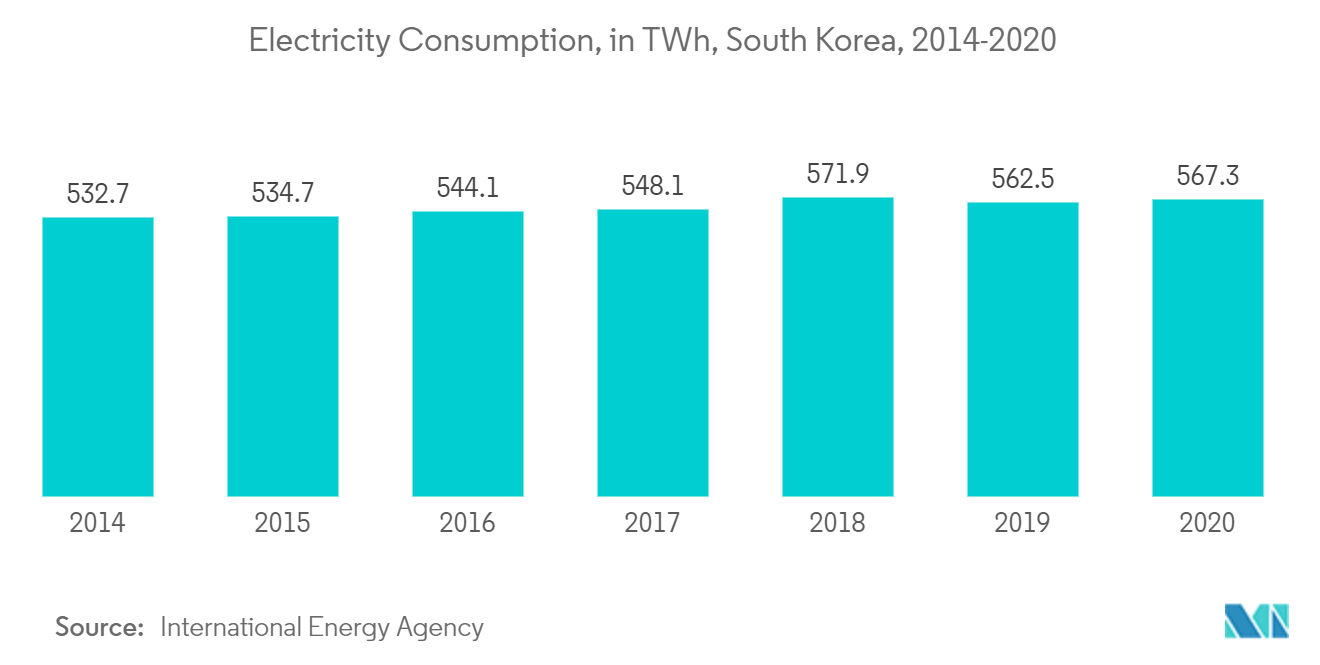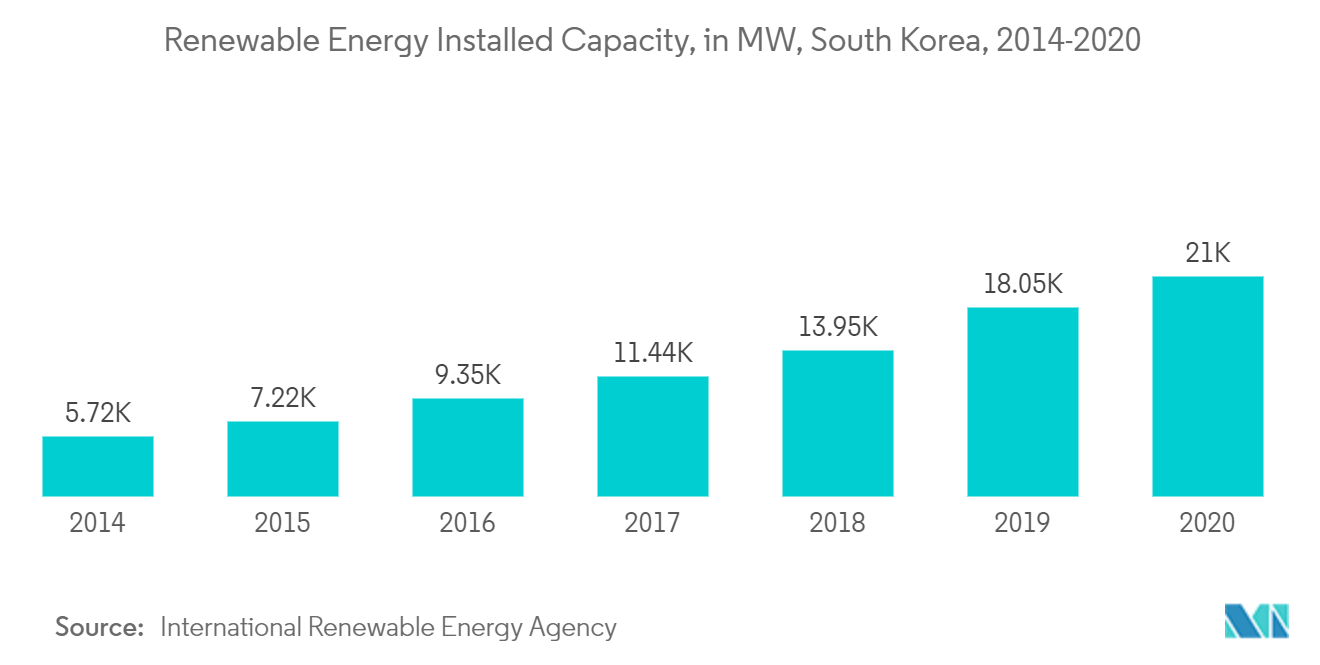Market Trends of South Korea Smart Grid Network Industry
This section covers the major market trends shaping the South Korea Smart Grid Network Market according to our research experts:
Advanced Metering Infrastructure to Witness a Significant Growth
- Advanced metering infrastructure (AMI) or smart metering is an integrated system of smart meters, communications networks, and data management systems that enables two-way communication between utilities and customers.
- To promote the use of advanced metering systems, the government selected projects as the core implementation programs of the 2nd Intelligent Power Grid Master Plan that included the development of new electricity services like deployment of AMI at 22.5 million homes and buildings nationwide, which are further expected to be integrated for block-chain application in energy trading.
- Furthermore, KEPCO is planning to distribute 100% AMIs in private new buildings and more than 50% in existing buildings by 2022, and achieve a 100% AMI coverage in all sectors by 2025. With this, massive market growth is expected in the forecast period.
- Electricity consumption in South Korea has been a showing a continuous increasing trend. The electricity consumption in 2020 stood at 567.3 TWh as compared to 481.5 TWh in 2010. The electricity consumption is expected to grow furhter in future. This increasing consumption of electricity requires efficient monitoring and management where smart grid infrastructures, such as Advance Metering Infrastructure come to play.
- With the increasing efforts to modernize the electricity grid and develop smart cities, the Government of South Korea is investing in advanced metering infrastructure. This, in turn, is expected to drive the AMI market during the forecast period.

Renewable Energy and Government Initiatives to Drive the Market
- A smart grid is a next-generation electricity network in which two-way exchange of information on power generation and consumption is conducted in real-time, through the convergence of the existing electrical grid with ICT
- The government drafted the 'Smart Grid Roadmap 2030' in 2010. This roadmap includes a vision, short- and medium-term goals for 2012, 2020 and 2030, and the five implementation areas of smart grids (smart power grid, smart buildings, smart transportation, smart renewables, smart electricity service). It also includes USD 1.7 billion investment relevant for the smart grid by 2030.
- In July 2020, the Korean government announced a "Green New Deal" recovery measure for post-COVID-19. The government has differentiated this Green New Deal from others which involved a massive scale of civil work projects. According to the Korean government, the Green New Deal will be coupled with Digital New Deal and become the two key pillars of the country's post-COVID-19 strategy.
- Digital New Deal will build a digital infrastructure to support public services and commercial activities. While Green New Deal will strive to install green infrastructure to support the energy supply and demand. These two deals are expected to support the smart grid network in South Korea as the government is focusing on energy efficient infrastructure.
- In addition to this, the robust growth in renewable installed capacity from 5716 MW in 2014 to 20,998 MW in 2020, has created a vast market for smart grid network as renewable plants need to be integrated into the main grid as well. The renewable installed capacity is expected to grow further during the forecast period.
- South Korea, with various initiatives and policies and the rapidly increasing renewable capacity, is expected to witness significant growth in the smart grid market in the coming years.


